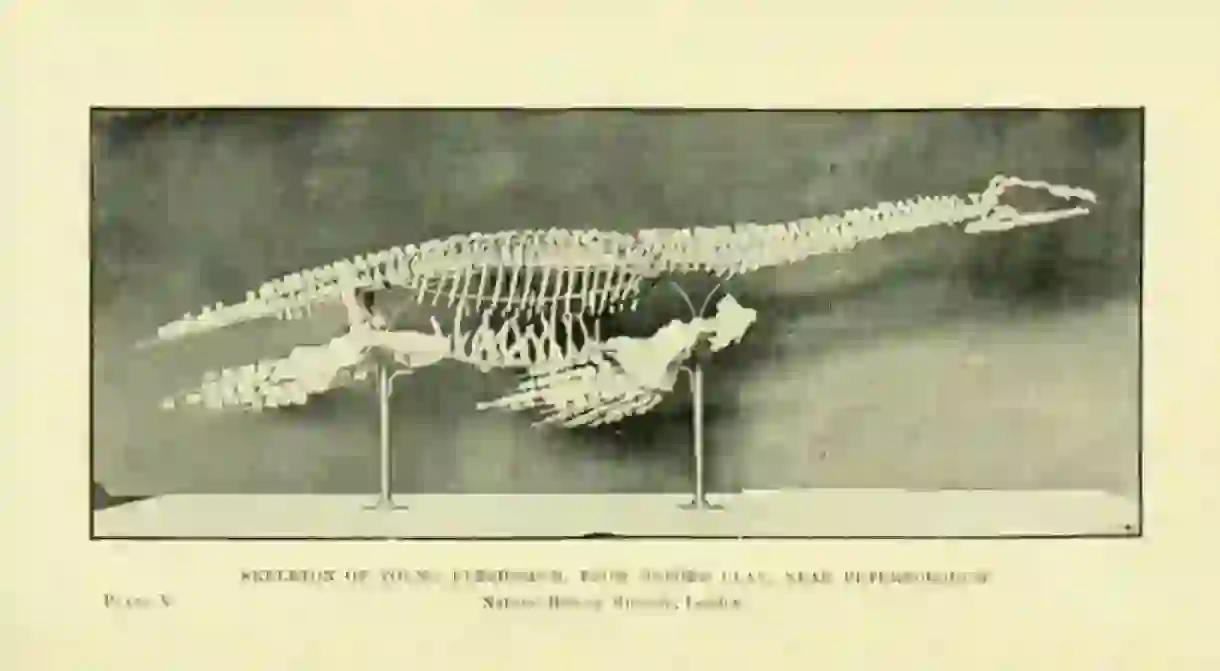The Story Of The Loch Ness Monster

With six documented sightings in 2016 alone, the enticing tale of the Loch Ness Monster, affectionately named Nessie, has etched away at the minds of people from Scotland and afar. After sifting through the numerous sightings, alleged accounts, worthy expeditions, and supposed hoaxes — all in the name of Nessie — it’s hard not to form an obsession over Scotland’s beloved loch creature.
Elusive and drenched in uncertainty, The Loch Ness Monster is an aquatic being of enormous magnitude said to dwell in the deepest, darkest depths of Loch Ness in the Scottish Highlands. Tongues first started wagging around 1933 when people began noticing unprecedented sights in and around the loch. However, many state that an earlier sighting occurred much further back in time.

In 565 AD, the Life Of St. Columba by Adomnán states that Saint Columba, an Irish monk, spotted locals putting a man to rest by the River Ness. After hearing that the deceased suffered a brutal water beast attack, Saint Columba sent someone to swim across the river. Yet again, a water creature targeted the swimming soul, but alas — Columba motioned the Holy Cross sign which urged the beast to subsequently obey and retreat. To some, this account proves the existence of Nessie (although in a nearby river) centuries ago. To others, this is merely another example of medieval hagiography.
Time made its natural progression and so the sightings continued. Around 1871, D. Mackenzie spotted something in the loch that looked like an upturned boat squirming in the water. By 1933, the creature became a celebrity once more when George Spicer and his wife saw an unidentified spectacular pre-historic looking animal walk before their car. Their description noted an enormous animal (approximately 4ft high and 25ft long) with a never-ending neck similar to an elephant’s trunk, lurching towards the loch. Similarly, a motorcyclist named Arthur Grant was shaken following an unexpected encounter with the creature that same year — he nearly hit it. Grant saw a small-headed elusive being with a long neck, and referred to it as some sort of seal and plesiosaur hybrid. Sightings increased when a road was built winding along the loch side.

Throughout the years, a handful of somewhat blurry photographic findings have emerged from the surface. Perhaps the most famous is the ‘surgeon’s photograph’, the supposed first photo of the creature’s upper body. Allegedly, the photo was snapped by Robert Wilson, a gynecologist who refused to accept photo credit, hence the name ‘surgeon’s photograph’. This famed photo acted as evidence for a significant number of years, before being deemed part of a most elaborate hoax, much to many cynics’ delight.
The sightings of Nessie are not exclusive to a bygone past. A laboratory tech in 2007 caught some smashing video footage of a ‘jet black thing, about 46ft, moving fairly fast in the water’, while a Loch Ness tour boat captain photographed a sonar image in 2011 of a 4ft 11in unidentified image following the boat. Interestingly, the 2012 photograph displaying a hump in the water (which is said to be independently verified by a Nessie sighting specialist and US military monster experts) caused a stir, as did the fascinating 2014 satellite image of a large creature from none other than Apple Maps.

Over time, an ineffable amount of expeditions and missions in search of this Scottish denizen of the deep have taken place in full force. From the 1934 five week search and countless sonar studies to the Robert Rines Investigations, Operation Deepscan, and the BBC’s 2003 attempt, there is no denying the enormous amount of effort endured by those determined to prove the existence of this unfathomable enigma.
Amidst the folk fueled by a lifelong mission and burning desire to locate Nessie, sit the die-hard skeptics. Who can blame them? With multiple failed attempts and copious hearsay speculations, it seems purely logical that such ‘sightings’ are simple optical illusions or distorted views featuring floating debris, seals, or catfish. Others prefer to view it as an ‘old wives’ tale’ riddled in folklore. Some remain cynical. Others are determined to channel their inner cryptozoologist and find Nessie. At the end of the day, there is truth to every tale. The sightings didn’t just spring up from nowhere.














